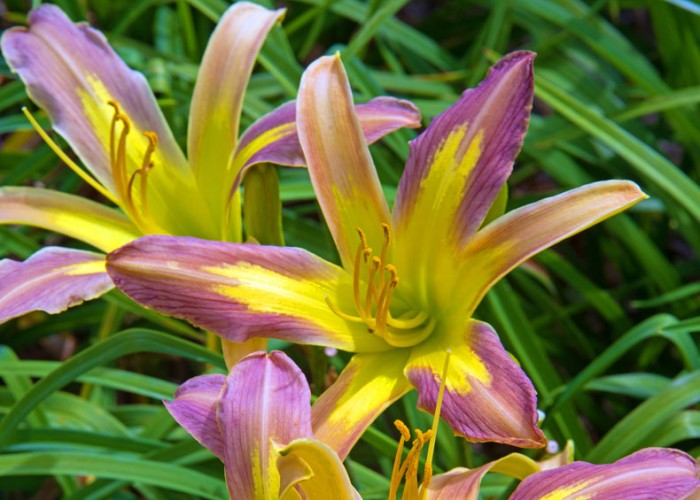Explore an Array of Black-Eyed Susans
Plus Garden To-Do’s for March
By L.A. Jackson
Cherokee Sunset Black-Eyed Susans
Native black-eyed Susans have long been standard beauties in North Carolina gardens. Whether Rudbeckia hirta that blooms in early summer, or the later-flowering R. triloba and R. fulgida, these Suzies have been steady performers, dependably bringing cheer with their abundance of bright yellow flowers.
Plant breeders have also noticed the dependability — as well as deer resistance — of black-eyed Susans, and as a result, have been busy developing new, fancier cultivars. And with many of these introductions, it seems little black-eyed Suzy is growing up. (She has discovered makeup.)
Below is a sampling of some of the more colorful variations available to gardeners today. They can be found for sale online at e-nurseries such as Bluestone Perennials and Park Seed, but also check with your local garden centers for these and similarly sassy selections of new Suzies.
Autumn Colors
Black-eyed Susan’s signature yellow petals are beautifully accented on this pretty with streaks of burgundy, bronze and orange. Add blooms almost five inches in diameter to such a merry mix of colors, and you have quite an attention-getter in the garden!
Prairie Sun
A green-eyed cutie, it was a 2003 All-America Selection winner, and for good reason — it boasts long-lasting flowers with petals that start golden yellow at the bases and fade to a pretty buttery hue on the tips.
Plant breeders have also noticed the dependability — as well as deer resistance — of black-eyed Susans, and as a result, have been busy developing new, fancier cultivars.
Green Wizard
Weird. That’s the only way to describe this intriguing cultivar. The large center cones look like black strawberries and are ringed by green sepals — no flower petals. Easily preserved, the blooms make striking (bordering on strange) additions to dried arrangements.
Cherry Brandy
As advertised, this attractive Suzy parades blooms devoid of yellow that, instead, sizzle in shades of red. It’s very different! This winner of the Fleuroselect Novelty Award in Europe shows off a bounty of blossoms on compact, two-foot-tall plants.
Cappuccino
Another Fleuroselect winner, it offers a pleasant brew of hues ranging from red to orange with a dusting of yellow on four-inch-diameter flowers that persist through the long summer season.
Prairie Glow
Looking more like fire wheels than flowers, the bicolor blossoms of this beauty have petals starting as orange-red streaks that give way to bright yellow tips.
Cherokee Sunset
Orange, bronze, yellow, reddish‑brown — these are the colors of this 2002 All-America Selection winner, which boasts semi-double and double flowers that mimic the tints of, what else? A magnificent sunset.
Garden To-Do’s for March

- Black-eyed Susans come in perennial, annual and biennial forms, but all of them have common cultivation requirements. First, they will produce better flower shows if encouraged by a low-nitrogen, slow-release fertilizer added at planting time. Second, most selections are sun worshipers, but providing a bit of midafternoon shade will help prolong the fresh look of their blossoms. Also, powdery mildew can be a problem, so, for better air circulation to minimize this disease, set your Suzies in an open area and don’t overcrowd the plants. Finally, watch for slug and snail damage, especially on young plants.
- Has your lawn mower blade been sharpened in the last two years? If not, maybe it’s time. A dull blade tears instead of slicing clean cuts, making grass stems more susceptible to disease.
- Replace winter mulch under roses with a fresh organic covering for the warm-season growing period to come. To sneak in a bit of organic fertilizer, spread a layer of compost first and then cover it with shredded hardwood mulch.
- Rake out the protective winter mulch around hardy perennials and replace with fresh organic material, being careful not to cover any basal leaves or fresh spring sprouts.
-
More March Gardens
-
Share this story:






Comments (2)
Jean. Ferguson |
March 15, 2021 |
reply
Jean. Ferguson |
March 15, 2021 |
reply